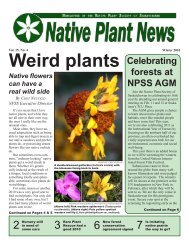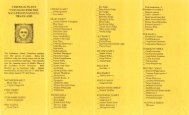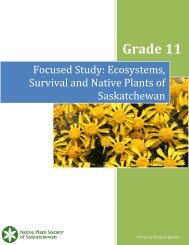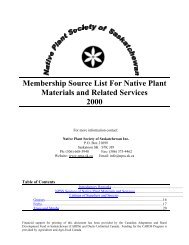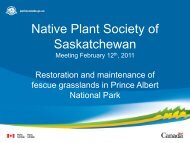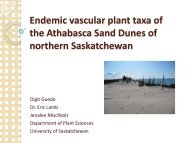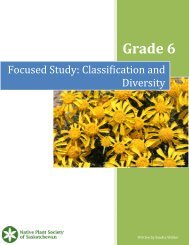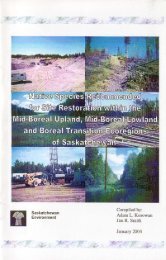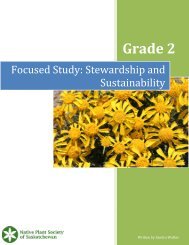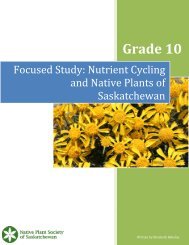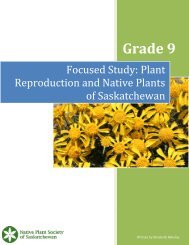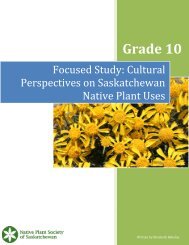Native Plants As Habitat For Wildlife - Native Plant Society of ...
Native Plants As Habitat For Wildlife - Native Plant Society of ...
Native Plants As Habitat For Wildlife - Native Plant Society of ...
You also want an ePaper? Increase the reach of your titles
YUMPU automatically turns print PDFs into web optimized ePapers that Google loves.
The Government <strong>of</strong> Canada <strong>Habitat</strong> Stewardship Program for Species at Risk<br />
Dean Nernberg<br />
Canadian <strong>Wildlife</strong> Service, Environment Canada<br />
Stewardship and the Federal Strategy<br />
Stewardship refers to the wide range <strong>of</strong> voluntary actions by Canadians to care for the<br />
environment. Activities range from monitoring and conserving wildlife species and their<br />
habitat, to protecting and improving the quality <strong>of</strong> soil, water, air and other natural<br />
resources. These types <strong>of</strong> conservation actions, particularly those activities that provide<br />
habitat, are essential to the recovery <strong>of</strong> species at risk and to the prevention <strong>of</strong> other<br />
species from becoming at risk in the first place.<br />
Examples <strong>of</strong> activities that Canadians, such as farmers, naturalist club members, fishing<br />
interests and resource companies, are undertaking to care for the environment and to<br />
protect species at risk and their habitats include:<br />
• Protecting habitat for Burrowing Owls and reporting sightings <strong>of</strong> them;<br />
• Installing nest boxes for species such as the Eastern Bluebird, Prothonotary<br />
Warbler, and the Barn Owl;<br />
• Improving habitat conditions for the Eastern Loggerhead Shrike by putting cattle<br />
into pastures where controlled grazing is required to prevent encroachment <strong>of</strong> some<br />
plants;<br />
• Clearing habitat and protecting nesting areas for the Spiny S<strong>of</strong>tshell Turtle;<br />
• Restoring fish habitat and cleaning up streams;<br />
• Developing selective fishing gear methods to reduce catch <strong>of</strong> species at risk;<br />
• <strong>As</strong>sisting in the development <strong>of</strong> land use guidelines that further protect habitat for<br />
species at risk.<br />
A variety <strong>of</strong> players help make these stewardship actions possible and successful over the<br />
long-term.<br />
The federal government's three-part strategy to protect species at risk consists <strong>of</strong> building<br />
on the Accord for the Protection <strong>of</strong> Species at Risk, the new legislation, the proposed<br />
Species at Risk Act (SARA), and the introduction <strong>of</strong> stewardship programs. Stewardship<br />
programs will help Canadians protect species at risk and their habitats.<br />
Value <strong>of</strong> Partnerships<br />
Governments, both federal and provincial, have for many years assisted Canadians in<br />
protecting species at risk and their habitats. They have done so by providing scientific<br />
information and technical assistance, as well as economic incentives such as direct<br />
financial assistance and income tax reductions for donations <strong>of</strong> ecologically sensitive<br />
lands.<br />
Non-pr<strong>of</strong>it organizations, such as Ducks Unlimited Canada and the Nature Conservancy<br />
<strong>of</strong> Canada, are key in making these types <strong>of</strong> activities possible by helping landowners to<br />
7



